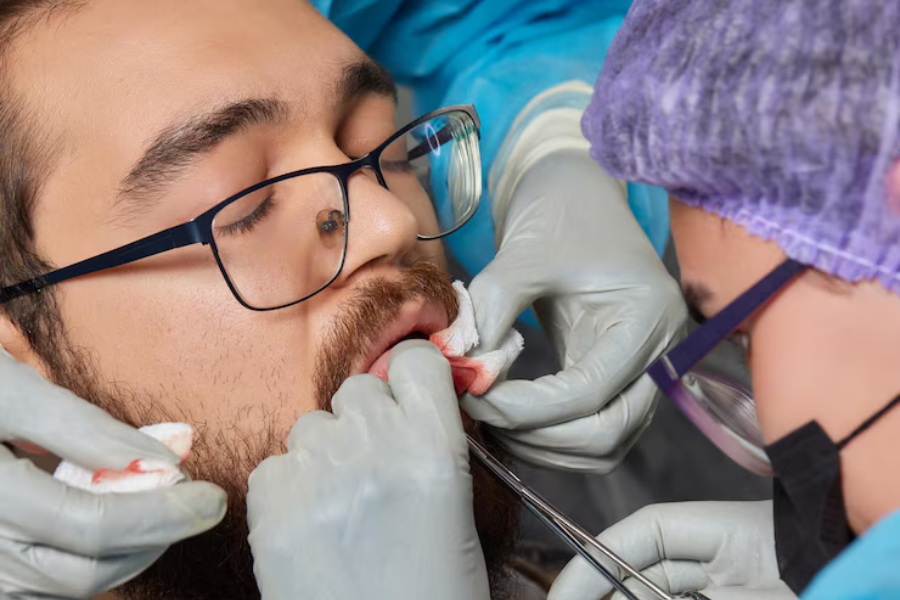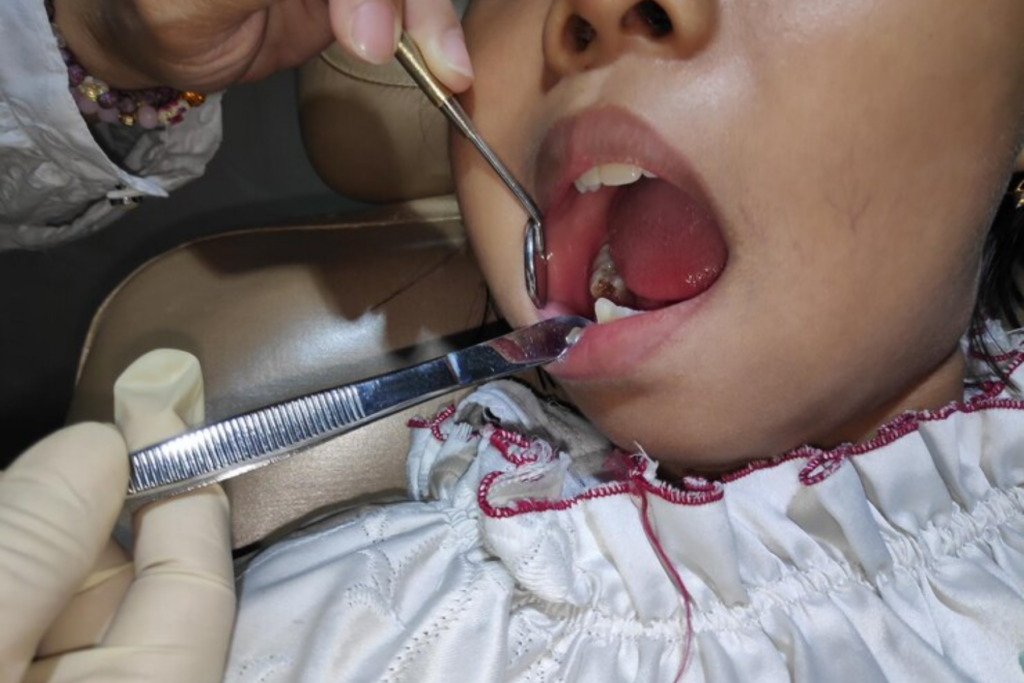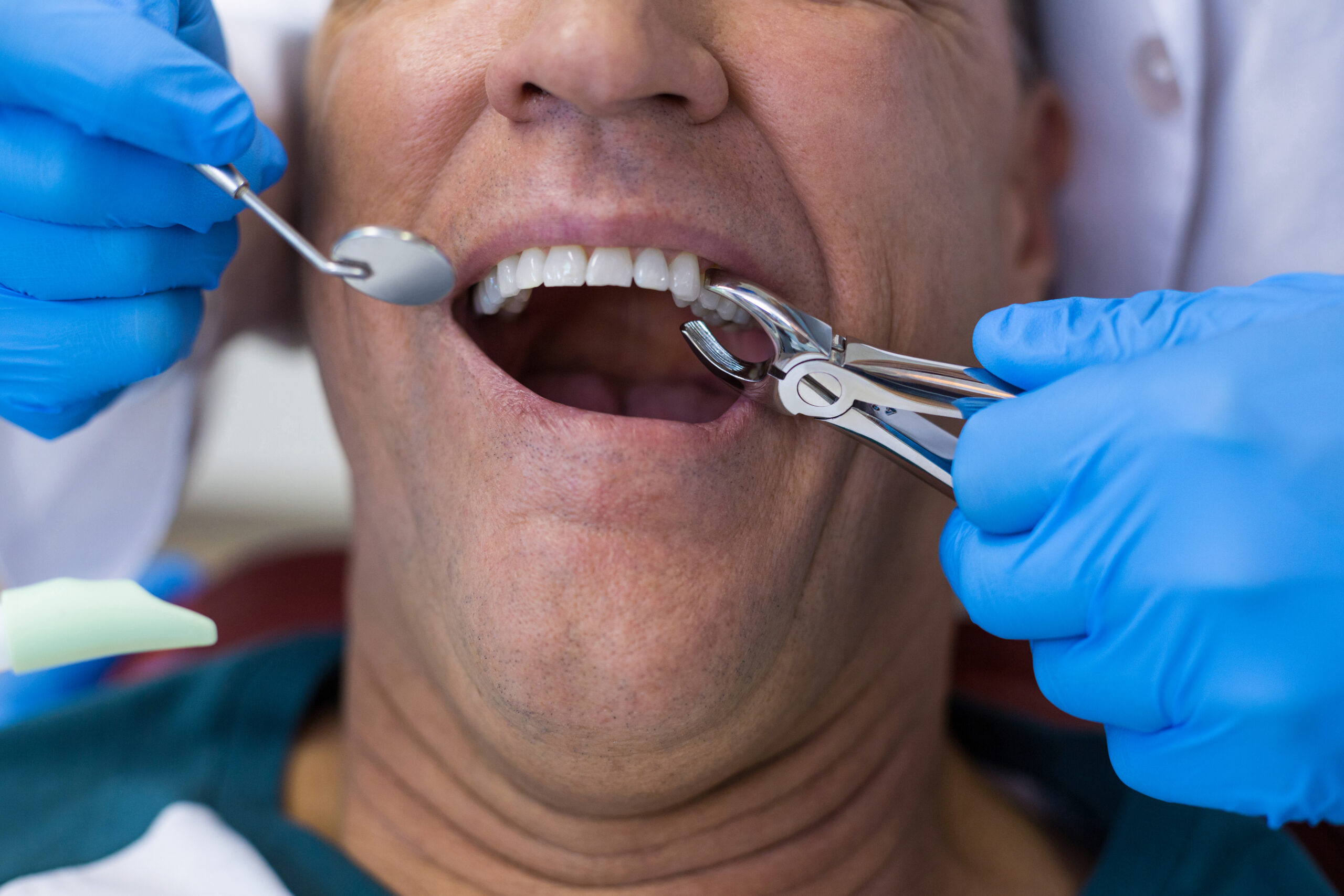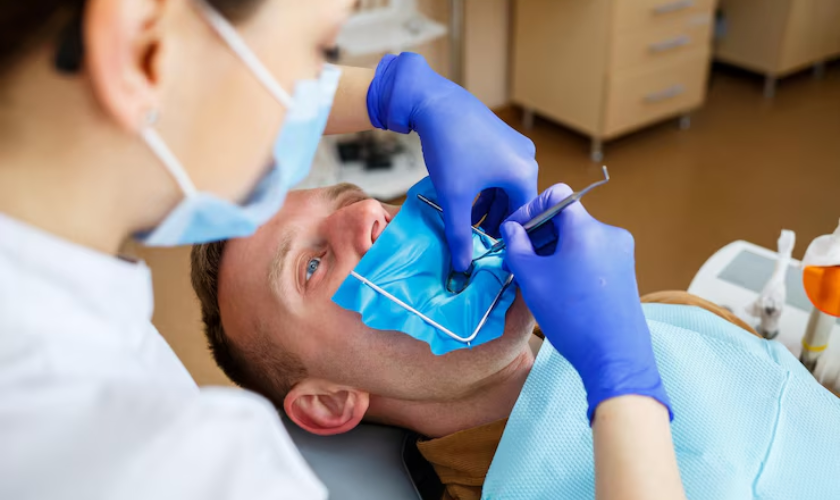We are not a registered Medicare/Medicaid Provider
Tooth Extraction Bleeding: Know How To Stop It!

Tooth extraction is a common dental procedure performed for various reasons, such as severe decay, infection, overcrowding, or trauma. While the extraction itself may seem like the end of the discomfort, managing post-extraction bleeding is equally crucial for a smooth recovery process. In this comprehensive guide, we’ll delve into the causes of tooth extraction bleeding and explore effective strategies to stop it, ensuring a comfortable and speedy recovery for you or your loved ones.
Understanding Post-Extraction Bleeding:
When a tooth is extracted, it leaves an open socket in the gum tissue where the tooth once was. This socket is essentially a wound that needs time to heal. During the extraction procedure, your dentist or oral surgeon will apply pressure to the extraction site to encourage blood clot formation. However, it’s not uncommon for bleeding to occur once the clot dislodges or breaks down prematurely.

Causes of Tooth Extraction Bleeding:
Several factors can contribute to post-extraction bleeding:
- Dislodged Blood Clot: The most common cause of bleeding after a tooth extraction is the dislodgement of the blood clot that forms in the socket. This can occur due to factors such as vigorous rinsing, drinking through a straw, smoking, or excessive physical activity.
- Medications: Certain medications, such as blood thinners or anticoagulants, can interfere with the blood’s ability to clot properly, leading to prolonged bleeding after a tooth extraction.
- Poor Oral Hygiene: Inadequate oral hygiene following a tooth extraction can increase the risk of infection, which may manifest as persistent bleeding.
- Medical Conditions: Individuals with underlying medical conditions such as hemophilia or liver disease may experience prolonged bleeding following a tooth extraction due to impaired clotting mechanisms.
How to Stop Tooth Extraction Bleeding:
If you experience bleeding after a tooth extraction, it’s essential to take appropriate steps to stop it promptly and promote healing. Here are some effective strategies:
- Apply Pressure: Immediately following the extraction, your dentist or oral surgeon will place a gauze pad over the extraction site and instruct you to bite down firmly to apply pressure. This pressure helps promote blood clot formation and staunch bleeding. Replace the gauze pad as instructed or when it becomes soaked with blood.
- Avoid Disturbing the Clot: To prevent dislodging the blood clot, avoid rinsing your mouth, spitting forcefully, drinking through a straw, or engaging in strenuous physical activity for at least 24 hours after the extraction. These actions can create suction or pressure in the mouth, which may disrupt the clotting process.
- Ice Packs: Applying an ice pack to the outside of your cheek near the extraction site can help constrict blood vessels and reduce bleeding. Wrap the ice pack in a thin cloth and apply it in 10-minute intervals, allowing your skin to rest between applications.
- Maintain Good Oral Hygiene: While it’s essential to avoid vigorous rinsing immediately after a tooth extraction, you should still maintain good oral hygiene to prevent infection. Gently brush your teeth and tongue, be careful to avoid the extraction site, and rinse your mouth with a saltwater solution as directed by your dentist.
- Over-the-counter Medications: Over-the-counter pain relievers such as ibuprofen (Advil, Motrin) or acetaminophen (Tylenol) can help alleviate discomfort and reduce inflammation associated with post-extraction bleeding. However, avoid aspirin as it can further thin the blood and increase bleeding.
- Seek Professional Help: If bleeding persists or worsens despite following these measures, contact your dentist or oral surgeon immediately for further evaluation and treatment. They may need to apply additional measures, such as sutures or a medicated dressing, to control the bleeding effectively.
Tooth extraction is a routine dental procedure that can lead to post-operative bleeding if not managed properly. By understanding the causes of tooth extraction bleeding and following the appropriate steps to stop it, you can promote a smooth and uneventful recovery process. Remember to follow your dentist’s post-operative instructions carefully and seek prompt medical attention if bleeding persists or becomes severe. With proper care and attention, you can minimize discomfort and expedite the healing process following a tooth extraction.


